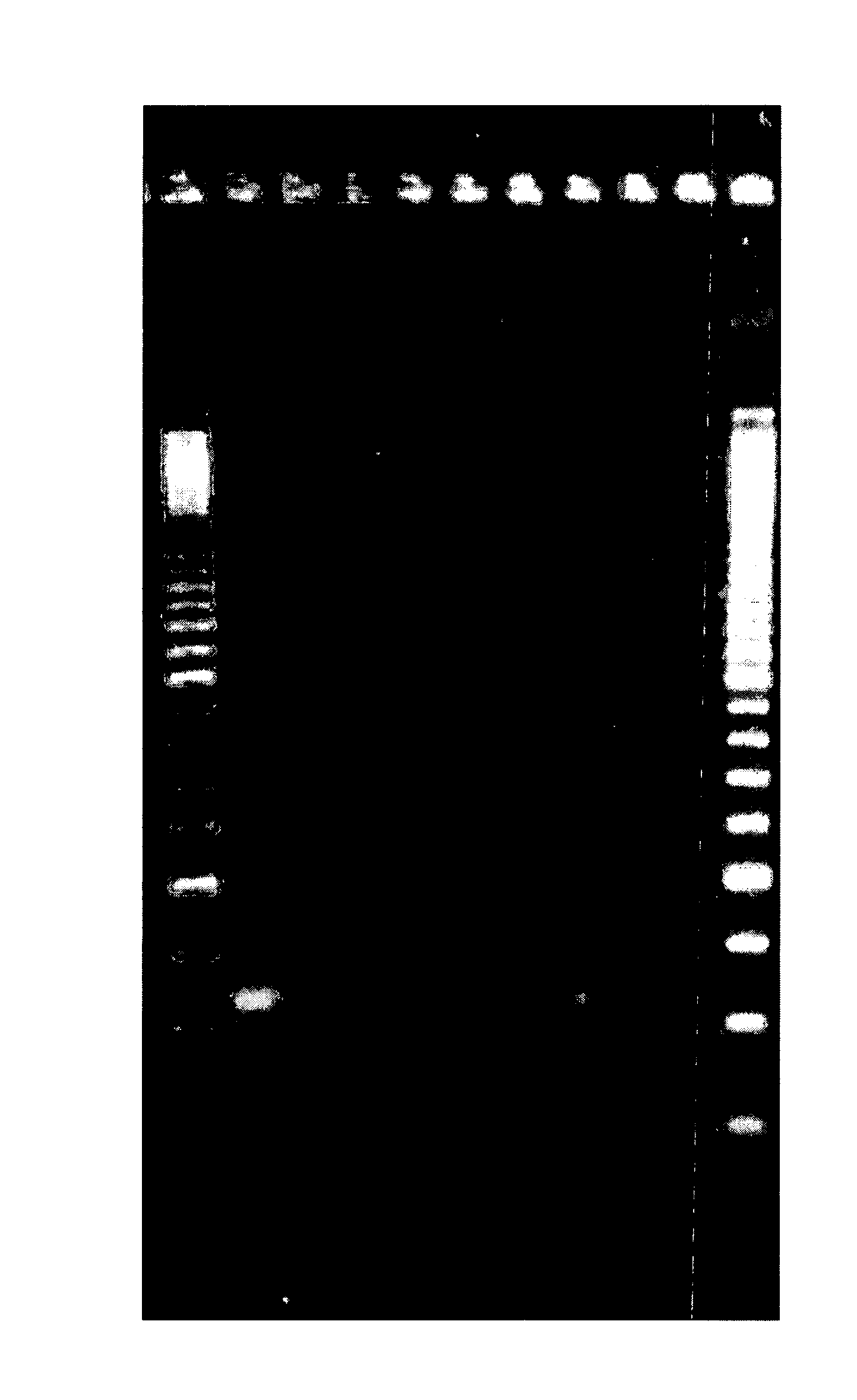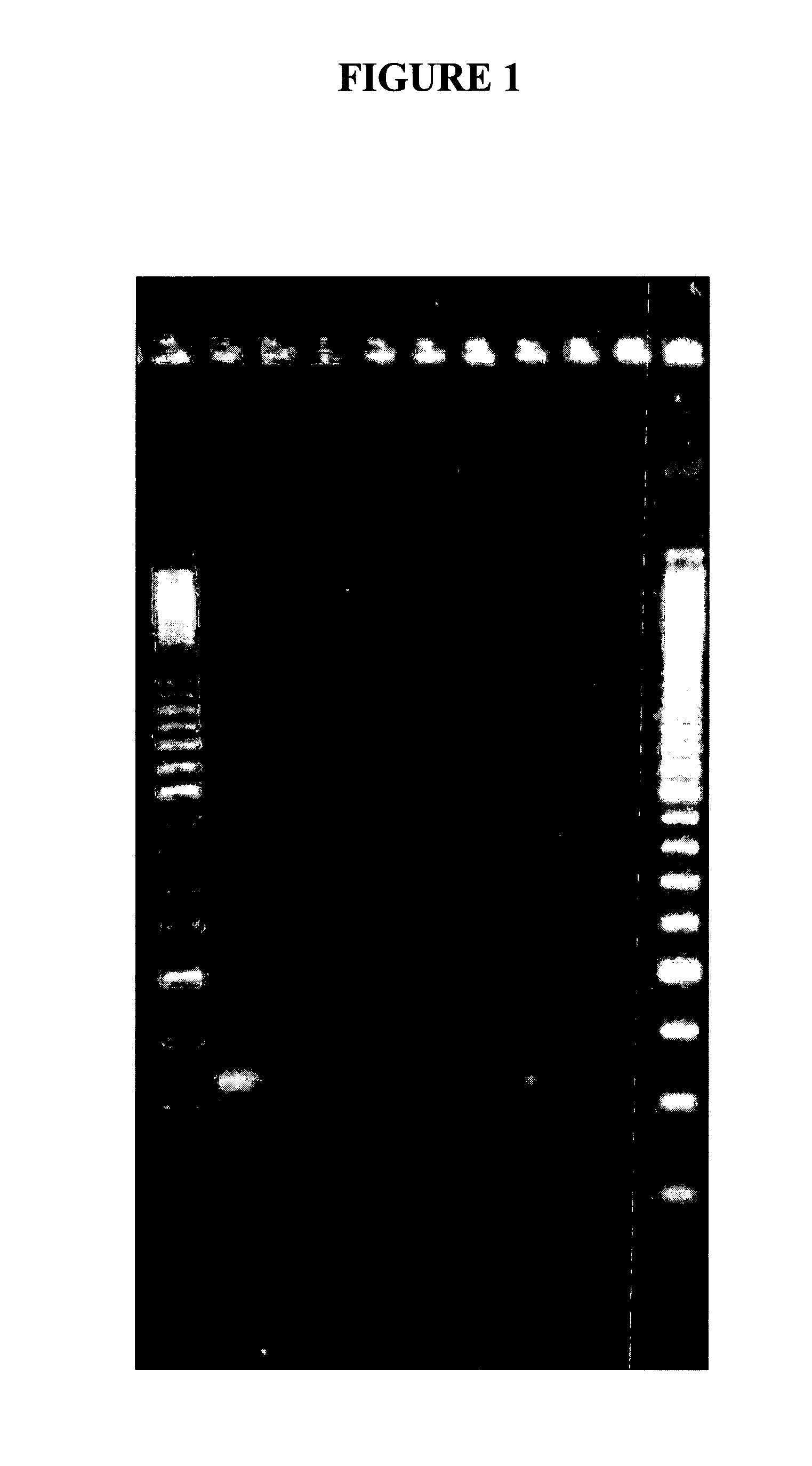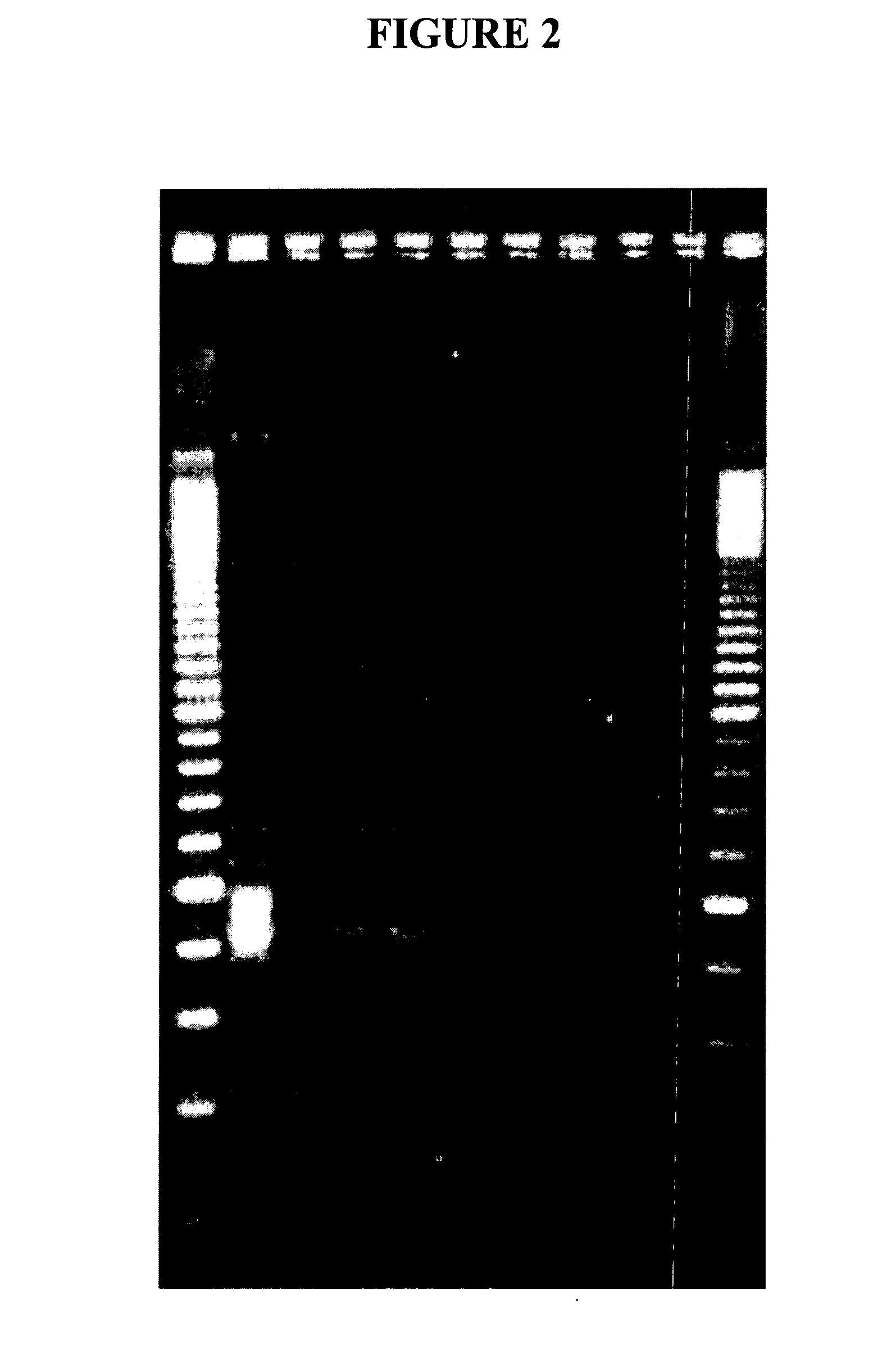Compositions and methods for removal of DNA from a sample
a technology of dna and dna molecules, applied in the field of compositions and methods for digesting dna, can solve the problems of limiting the reaction and low purity of rna for other applications, and achieve the effect of eliminating or reducing undeired dna molecules and enhancing dna digestion
- Summary
- Abstract
- Description
- Claims
- Application Information
AI Technical Summary
Benefits of technology
Problems solved by technology
Method used
Image
Examples
example 1
[0052] This example demonstrated that residual DNA remains after DNase I digestion using commercially available DNase I enzymes. 1 μg amounts of the plasmid pUC 19 were incubated in DNase I buffer in a 50 μl reaction with 1 μl amounts of DNase I from various vendors. Reactions were incubated for 10 min. at 37° C. and subjected to agarose gel electrophoresis and staining as described above.
example 2
[0053] This example describes the testing of a variety of nucleases in an attempt to complete the digestion of DNA with Epicentre DNase I. pUC 19 (1 μg) was incubated in reaction buffer for 10 min. at 37° C. with the indicated nucleases. Results were analyzed by agarose gel electrophoresis as described earlier. Only exonuclease I was capable of eliminating residual DNA remaining after DNase I digestion under the conditions described.
example 3
[0054] This example describes the ability of enzyme mixtures of the present invention to enhance RT-PCR reactions by reducing contaminating genomic DNA.
[0055] HeLa cells were cultured with conventional method in a CO2 incubator. The cells were grown in DMEM (Dulbecco's Modification of Eagle's Medium) with 4.5 g / L glucose, L-glutamine and sodium pyruvate, supplemented with 10% fetal bovine serum (Mediatech Inc., Herndon, Va.). 0.25% trypsin (Mediatech) was used to harvest the cells. Seven individual samples of approximately 8×105 HeLa cells were harvested and washed with 1×PBS before subjected to RNA purification using MasterPure™ RNA Purification Kit (Epicentre Biotechnologies, Madison, Wis.). These seven RNA samples followed exactly the same purification procedure except that they were treated with 2 U of different versions of DNase I. One of the seven samples was not treated with any DNase. These samples were incubated for 10 minutes at 37° C. for the DNase treatment. Five of the...
PUM
| Property | Measurement | Unit |
|---|---|---|
| volume | aaaaa | aaaaa |
| concentration | aaaaa | aaaaa |
| concentration | aaaaa | aaaaa |
Abstract
Description
Claims
Application Information
 Login to View More
Login to View More - R&D
- Intellectual Property
- Life Sciences
- Materials
- Tech Scout
- Unparalleled Data Quality
- Higher Quality Content
- 60% Fewer Hallucinations
Browse by: Latest US Patents, China's latest patents, Technical Efficacy Thesaurus, Application Domain, Technology Topic, Popular Technical Reports.
© 2025 PatSnap. All rights reserved.Legal|Privacy policy|Modern Slavery Act Transparency Statement|Sitemap|About US| Contact US: help@patsnap.com



